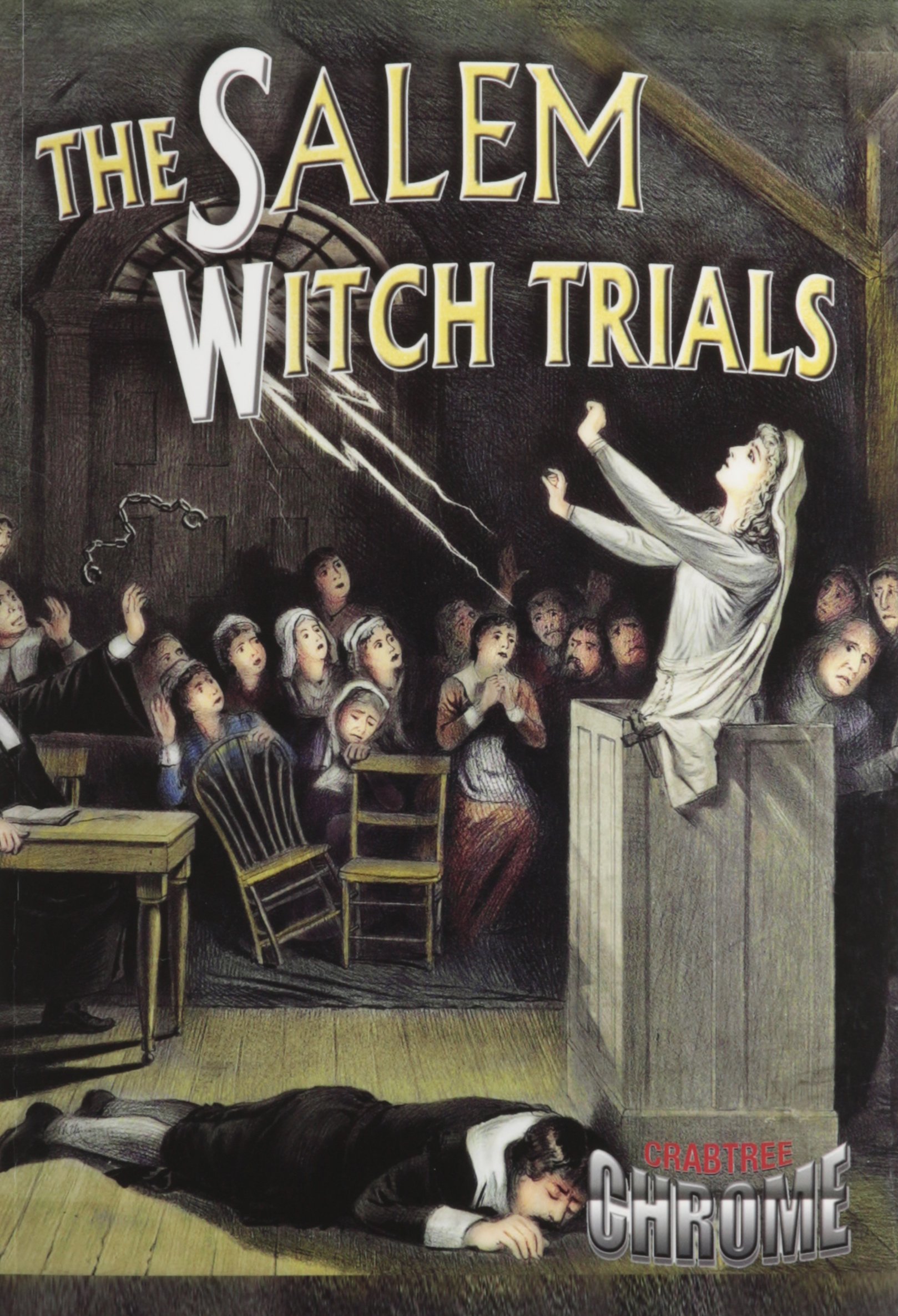| ________________
CM . . .
. Volume XXI Number 27. . . .March 20, 2015
excerpt:
Salem, Massachusetts, is etched in historical memory as the site of the infamous witch trials that consumed the Puritan colonial settlement in 1692 and early 1693. Johnson’s account, told in simple language with copious illustrations, chiefly in colour, plus photographs and one map, covers the main points of the tragic and hysterical events in a concise and straightforward manner. She begins with the peculiar behaviour of two girls who, upon examination by a colonial doctor, were diagnosed as being bewitched. Bewitched is the first of 21 words found one per double page that is chosen for further explanation in a footnote-like definition at the bottom of the spread and collected into a glossary at the end of the book. Johnson includes invaluable contextual information about the rivalry between the larger and more prosperous coastal Salem Town and the subordinate settlement of Salem Village. Struggles in other colonies were cause for concern amongst the Salem residents. Powerful people, like Reverend Samuel Parris and the wealthy Putnam family, are all introduced in the description of the social and economic situation of the settlement. Initially, a search for witches focussed on outsiders who did not follow societal expectations of the Puritan view of Christian life. Soon, many others were being accused of being witches or wizards. One man who refused to plea was pressed to his death. Johnson describes the courtroom as a circus where accusers put on dramatic displays that they blamed upon the so-called witches. Primary sources in the form of brief selections from court records or other first person accounts are effectively used to echo the narrative. The governor of Massachusetts put an end to the trials after they had gotten wildly out of control. The final trial took place in May 1693. Some fifty prisoners remaining in jail were pardoned but only allowed to go free if they paid for the cost of the food consumed while in prison. Of some two hundred persons charged with witchcraft, 19 were hanged and one pressed to death. Many villagers apologized for what they had said and done and even admitted to lying in court. Of the young girls that started the hysteria, only one made an apology, explaining many years later that the devil had tricked her into lying. The whole sorry episode cannot be explained by one simple cause. Johnson presents two theories: a fungus in the rye bread made the girls who started the craze sick; the girls faked the whole thing because they were bored in the small strict Puritan village. Once the witch trials began, however, it is clear that the societal worldview and discord helped to create conditions that some powerful people used for personal financial gain. This volume in the “Crabtree Chrome” series is intended for reluctant readers who are reading several levels below grade. It is definitely an engaging topic that should interest junior readers as well as the publisher’s stated target of struggling readers in grades 6-9. At least two of the five books listed in “Learning More” are written for primary level readers. Websites noted, including that for the Salem Witch Museum, are well-suited to young readers. There is an index, a table of contents, and the text is divided into subtopics as shown in the excerpt above. Recommended. Val Ken Lem is a librarian at Ryerson University in Toronto, ON.
To comment
on this title or this review, send mail to cm@umanitoba.ca.
Copyright © the Manitoba Library Association. Reproduction for personal
use is permitted only if this copyright notice is maintained. Any
other reproduction is prohibited without permission.
Next Review |
Table of Contents for This Issue
- March 20, 2015. |
